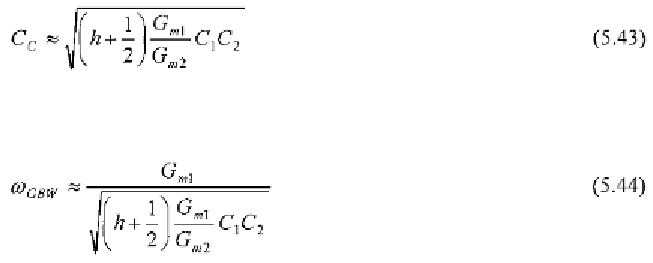Environmental Engineering Reference
In-Depth Information
and the gain bandwidth product results as
For practical phase margin values, the gain bandwidth product in (5.44) is
even higher than that obtained with a ideal current buffer. It is also higher
than the one obtained using a real voltage buffer. However, compensation
with a real current buffer is a less efficient strategy because, as demonstrated
in [PP97], it needs more area and/or power for equal gain bandwidth product
than compensation based on a real voltage buffer.
5.4 NESTED MILLER COMPENSATION
The compensation of multistage amplifiers (i.e., with a number of gain
stages higher than two) requires iteration of the simple Miller compensation
described previously [C78], [C821], [C96], [HL85], [EH95]. Typically,
three- and even four-stage amplifiers are found in CMOS implementations
including an output power stage for driving heavy off-chip loads [C822],
[OA90], [PD90], [TGC90], [CN91], [PNC93]
Moreover, given the decrease
in supply voltages,
cascoding
is not a suitable technique for IC applications
demanding both high gain and swing. Hence,
cascading
three or more
simple stages is the only viable option. Consequently, multistage amplifiers
and their frequency compensation issues have become increasingly
important in modern microelectronics [FH91], [EH92], [NG93], [PPS99],
[GPP00]. In the following we will discuss in detail compensation of three-
stage amplifiers, which are the most common architectures, but the results
obtained can also be adapted (although often not very directly) to
architectures with a higher number of stages.
.
5.4.1 General Features
Among the possible ways of exploiting Miller compensation in
multistage amplifiers, the so-called
nested Miller
(NM) compensation is one
of the most widely used. It can be utilised when only the final gain stage is
voltage-inverting.

